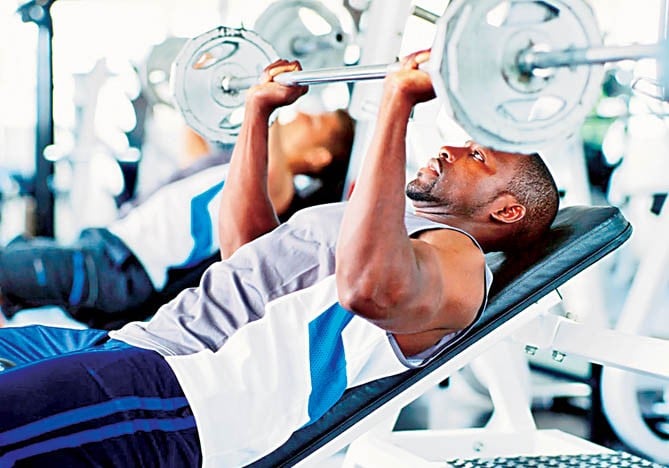
There has always been a debate about which sport produces the fittest athletes

Physical fitness is everyone’s desire; for some, it’s a craze. It can’t be regarded as only a fad -- it is a need.
Being overweight or obese increases the risks of diabetes, heart problems, hypertension, gout and osteoarthritis.
Obesity also leads to psychological and social problems.
Obese people are at three to four times higher risk of suffering from anxiety and depression. Even the job market is anti-obese. Studies show that obese people are less likely to be hired than thin people when their qualifications are equivalent.
With the present day sedentary life style, the incidence of obesity has greatly increased. As per WHO reports, the worldwide prevalence of obesity has nearly doubled over the last three decades.
It is put down mainly to the changed lifestyle. With TV and now the internet keeping people more and more at home, the outdoor activities have decreased.
Sports are regarded as the best ways to remain fit. For some, the two terms are synonymous.
Hockey has become a very fast and physically demanding sport; it demands the highest degree of fitness.
The changes in surface and rules have played a great part in making hockey a tough sport. Synthetic turfs replaced grass ones on the international circuit more than three decades ago. In 1996 the off-side rule was abolished.
Obstruction and turning rules have been softened and more recently the self-pass was introduced. These changes have greatly increased the pace of the game.
There has always been a debate about which sport produces the fittest athletes? The Loughborough University of the UK is one of the top sports institutes in the world. It is also home to the world’s largest university-based sports technology research group.
The sports scientists at Loughborough studied hours of action from the 2014 hockey World Cup, looking mainly at two qualities: the distances run during a match and the intensity maintained while running.
They then compared these to two other fast-paced team sports, football and rugby 7s.
The results revealed that on average, field players in hockey cover more distance and work at a higher intensity than footballers or rugby players.
In a general pattern of play, all three sports involve sprinting, jogging, walking and even periods when players stand still.
A rugby 7s player covers an average of 94 metres in a minute and a footballer covers 125 metres, but a hockey player outruns them all with a 140 metres per minute. Remember, this includes all actions -- jogging back after a sprint, or running flat out to chase down opponents and set up attacks.
Perhaps a more relevant thing when talking about the overall fitness of a player is the amount of the game that is played at a high intensity.
Whereas a football player spends just nine percent of the game working at an intensity that sees the heart-rate reaching 85-90 percent of its maximum, a rugby player works at a high intensity for 20 percent of the game. But a hockey player can sustain that work rate for 30-40 percent of the game.
During those periods of high intensity activity, a hockey player will be running at speeds of above 19kmh.
On average, a hockey player will run eight to nine kilometres during a match. Footballers run more than 10 kilometres in a game, but it is worth remembering that hockey is a 60-minute game whereas football is of 90 minutes. This means hockey players run almost the same distance in much less time.
Little wonder then that the super-fit hockey players excel in other sports as well.
At least three Pakistanis have been double internationals. Two of Pakistan’s hockey Olympians took part in the Asian Games but ‘not as hockey players’. Half-back Shahrukh was a member of Pakistan’s first-ever Olympic hockey team in 1948, which finished fourth. After 10 years, he participated in the Asian Games of 1958 as a cyclist, winning silver and bronze medals. It made him Pakistan’s most successful cyclist in the Asian Games history.
Right-out Farooq Khan participated in the 1962 Asian Games as a middle distance runner in athletics. In hockey, he won a gold medal as a member of Pakistan’s victorious team at the 1968 Olympics.
Right-out Iftikhar Shah competed in the 1962 Asian Games in sprints and long jump. He later appeared for the national hockey team in the 1968 Olympics against Kenya and Uganda.
In cricket, the most talked about fielder over the last quarter of a century has been Jonty Rhodes of South Africa. With excellent skills of catching, throwing and ground fielding, he was a complete package. But few people know that Rhodes also played hockey at the highest level.
He was part of the South African side for the 1992 Olympics but the team couldn’t qualify. He was also called up for the 1996 Olympics’ trials but a hamstring injury held him back.
Rhodes has always acknowledged that his speed, agility and reflexes owed a lot to hockey.
Hockey is a non-contact sport protected by the rules. Hence, to be a hockey player one doesn’t necessarily have to be physically big. People of any stature could play the sport.
In hockey, there are far less injuries than there are in other sports.
As many as one in four rugby players get injured during the season in England. Tens of thousands of players go to the local A&E with spinal cord injuries, fractures, ligamentous tears and concussion.
World Rugby’s chief medical officer has admitted that the laws of the game may have to be changed to reduce concussions.
The risk of injury in professional football is about 1000 times higher than in industrial occupations generally regarded as high risk (construction and mining).
All this makes our national sport the ultimate and safest route to fitness.